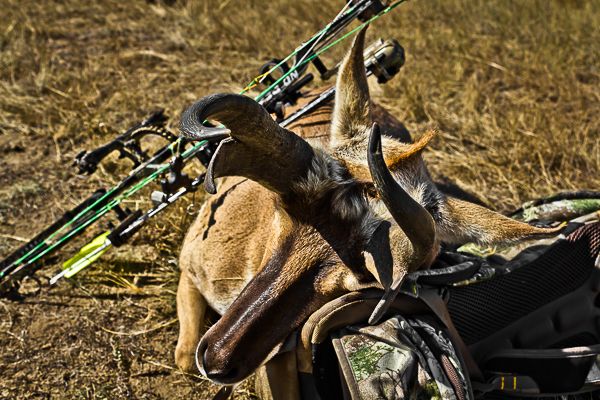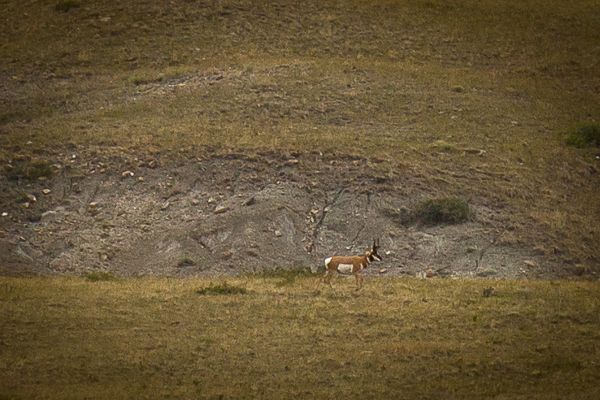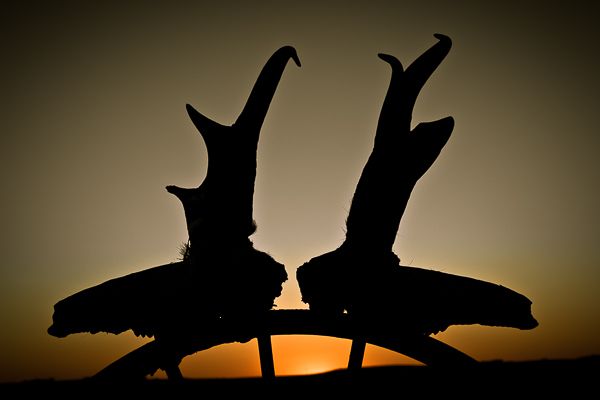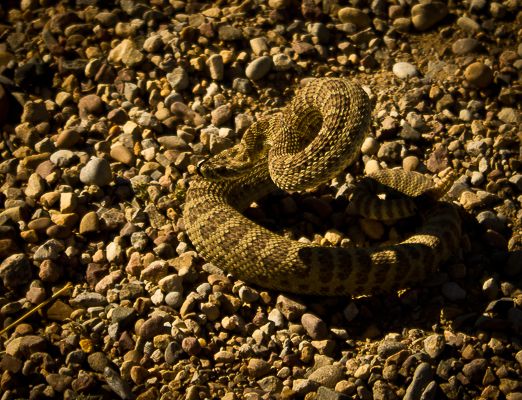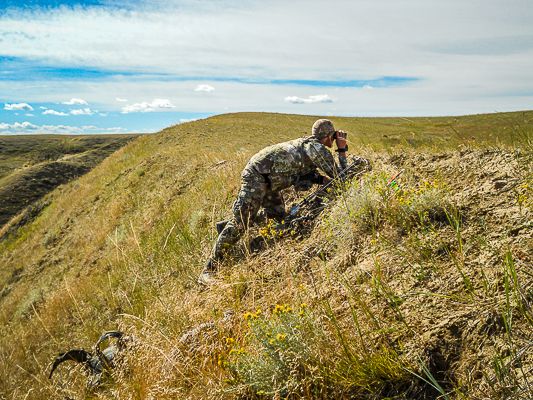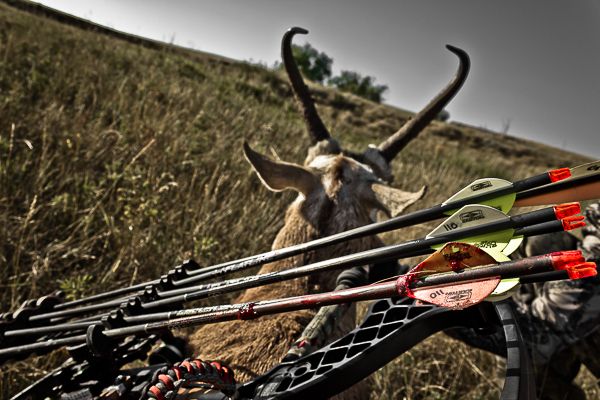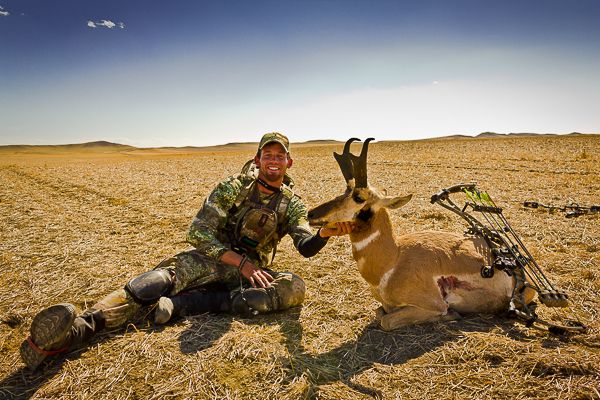LAST UPDATED: May 1st, 2015
My love for chasing antelope began while I was growing up, watching my dad return home from hunting trips out west. I hung by the edge of my seat on each word as my dad would tell the stories about how the hunt unfolded or about the big bucks that got away. These stories were followed by the numerous photos and protein packed dinners we shared as a family. I was lucky enough to tag along on an hunt when I was younger, which just further engrained my fascination with antelope. Right then and there, I knew that someday I wanted to move out west. That dream became a reality when I moved to Montana to attend college right after high school.
Antelope make the perfect late summer bowhunting opportunity.
Why Antelope
To me, spot and stalk antelope bowhunting is a complete adrenaline rush! Antelope are the perfect game to test your bowhunting skills. They carry eyes that can pick off the slightest movements, which can instantly ruin a long fought stalk in the heat, and they will test your nerves like no other animal. Antelope are also very plentiful animals, meaning that numerous stalk opportunities are available. Plus, one just can’t beat early hunting seasons during the hot August sun. It really doesn’t get much better!!
Putting the stalk on an antelope can prove very difficult thanks to their keen eye-sight.
Over the years I have failed plenty of stalk opportunities on great bucks, and the more I think about it, the more I realize I could probably write a book on the different ways I have blown a stalk. That’s the sheer beauty of bowhunting antelope and what drives me out each year onto the sagebrush filled flats with my bow in hand. The time when you successfully harvest your first spot and stalk antelope with a bow will be one of the most rewarding of your bowhunting experiences.
Persistence will eventually lead to success on speed goats.
Each failed stalk is another lesson on learning what you can and cannot get away with while pursuing antelope. Frustration can get the best of you, but if you learn to overcome difficulties and turn those blown stalks into positive experiences, then eventually you will get a chance at a great buck. I have been very fortunate to harvest some great antelope bucks over the years, and each season I learn something new about the thrill of spot and stalk bowhunting for antelope.
Gear Selection
Antelope and summer heat go hand in hand, so avoiding heat exhaustion is paramount to staying focused in the field. Lightweight gear is preferred to ensure you’re not carrying around extra weight that will cause your body to sweat more. When you’re on a long stalk with the sun rays beating down on your back, you will be happy you have a pack with a vented back to allow more air flow, along with a water bladder of at least 70 ounces. Water is key in the summer heat and spot and stalk hunting will cause you to overheat if you’re not properly hydrated. Since most antelope seasons start in early August, proper clothing will make your bowhunt a lot more comfortable. Layering up is a great idea, as temperatures can dip below freezing in the morning and easily push 100°F by mid afternoon. Also, be sure to choose lightweight clothing that breathes well.
In addition to the cactus and various other challenges, rattlesnakes can also be a part of the antelope experience….prepare accordingly.
While crawling around in antelope country, your knees and hands will be faced with numerous challenges such as cactus, yucca, and small sagebrush to name a few. Utilizing knee pads and wearing leather gloves will help protect your body from becoming a pin cushion. Another item I started wearing last year after frequent close calls with rattlesnakes are snake gaiters. These prevent snake bites by using a puncture proof material that will protect you from ankle to knee. I normally place these under my pants since I like to wear a small trail running gaiter as well to keep out small debris and rocks from making their way into my boots.
Optics
I routinely carry a spotting scope and a medium sized tripod, which is perfect for cutting through the heat waves from a vantage point while glassing at antelope. I prefer a 60x or higher spotting scope with at least a 65mm objective diameter. This enables me to scan the terrain, and if a buck is spotted, zoom in to see if it’s worth going after.
Good optics will save time and also make things easier on your eyes and legs.
Also, I have a pair of binoculars (in a carrying case on my chest) that aid in checking out antelope when closing the distance. Binoculars work perfectly for peering through grass so you don’t expose your body to a weary antelope. Even though they are a little heavy, 10×42’s are ideal for dissecting an antelope buck’s horns when you’re getting in close.
Don’t Leave Home Without Item
When it comes to bowhunting antelope, you are nothing without a rangefinder. Antelope can be hard to judge distance on, since they have a relatively small body size and shot range can push 50 yards. Even though I have been busted by plenty of antelope trying to range them, I always do so before coming to full draw. Small targets demand precise arrow placement.
A good rangefinder can’t be overemphasized. Always make sure you have one with you.
Locating Bucks
Typically, all my hunts start in front of a computer, dissecting maps online and searching for those areas that might not receive a lot of pressure, yet still have a chance to produce quality bucks. Start with the big picture and move to smaller high resolution maps and aerial imagery once you narrow down your hunting area. With this starting point established, next look over every feature in the terrain and mark all potential water holes, saddles, and anything that looks like it could contain antelope.
The author prefers to locate places that other hunters avoid. This tactic has proven effective numerous times.
I have had great success utilizing the most “out of the way” sections of public land that may be tough to access, or rougher terrain that might keep bowhunters from wanting to put forth the effort. Keep in mind that broken up terrain is a lot easier to bowhunt than areas that are virtually flat. Also, keep in mind that if you cannot scout the area ahead of time, use the first day of your hunt as a scouting mission…but carry your bow! I prefer glassing from afar to locate antelope in the early mornings. Get up on the highest terrain feature you can find and start to dissect the terrain with your optics.
Making The Stalk
When stalking antelope, it’s all about the eyes. Stalking up to a herd of multiple antelope is extremely tough as they can pick you out when you get in close. It is for this reason that I prefer trying to stalk bucks that are by themselves and is one of the reasons that I prefer to hunt before the antelope rut begins. You will find all sorts of ways to put a stalk on an antelope if you stop thinking the terrain is too flat and think out of the box. Getting low to the ground and utilizing all the different terrain folds will help get you closer to making the shot. Utilizing binoculars in this situation will enable you to pick your route out in the distance that you will need to follow in order to stay concealed. Pay special attention to any gully, small ridge, or tall brush that can aid in getting you closer to your antelope. Belly crawling is a common theme…so be sure to keep an eye out for cactus. I have found that it is relatively easy to get within 150 yards of a buck, but after that you really need to pay attention to your movements, slow down, and move cautiously.
Practice
Since antelope thrive in open terrain, shot distances may be a little longer than you are used to. Practicing real world situations will help you during the moment of truth. I suggest practicing a little beyond your effective shooting range to make the closer shots seem easy. Also, practice drawing your bow back in different ways. You never know if you’ll need to draw your bow while you are hunched forward behind some brush.
Shooting range can be much longer than your typical whitetail shot so practice routines should reflect this.
Conclusion
While spot and stalk bowhunting for antelope can be extremely difficult, it is outweighed by the sheer number of stalks one is presented with. Also, the fact that you will become a better bowhunter by getting to practice so many different stalk situations truly makes it all worth it. Getting close to a buck or doe antelope may be difficult, but if you’re willing to work hard, you will have plenty of opportunities to learn from. Soon enough you will succeed and take home a trophy that you will be proud of.

